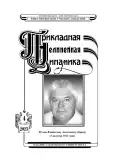Purpose. Previously, we developed a minimal foraging model in a honey bee colony that is applicable to describe both the decision-making process and the phase transition between two behavioral modes of the colony, individual and collective. In this paper, we show that this model is also applicable to determine the optimal division of labor in the colony, namely, to determine the optimal proportions between different types of foragers, scouts and recruits. Model. We represent the steps in the foraging process as reactions of chemical kinetics, which leads to reaction–diffusion equations. The reaction part describes the dynamic modes of the foraging process: the recruitment of unemployed foragers to profitable food sources, that have become unprofitable as a result of their exploitation, and scouting. Diffusion describes the transfer of information in a honey bee colony. We assume almost perfect accuracy in the transmission and use of information about food sources in the colony, which is modeled by a very small diffusion coefficient of working foragers in the information space. On the contrary, the diffusion coefficient of unemployed foragers is chosen large to ensure their full mixing in the information space. This models the equal accessibility to transmitted information for all unemployed foragers in the hive. Results. We consider the profit of a colony on an exploited food source as the number of foragers working on that source, weighted by its value to the colony. It was found that with an increase in the intensity of scouting, the profit of the colony first grows, and then begins to fall, thus illustrating that there is an optimal balance of scouts and recruits, which ensures the greatest influx of food resources into the colony. Conclusion. An optimal division of labor in a honey bee colony, defining a dynamic balance between exploration and exploitation in a constantly changing environment, is essential to the survival of the colony. Considering that scouts use exclusively personal information, and recruits take advantage of social information, we can say that our model describes the optimal balance between the individual and the collective in the colony.
 405-407
405-407


 408-420
408-420


 421-438
421-438


 439-451
439-451


 452-468
452-468


 469-483
469-483


 484-500
484-500


 501-522
501-522


 523-542
523-542












